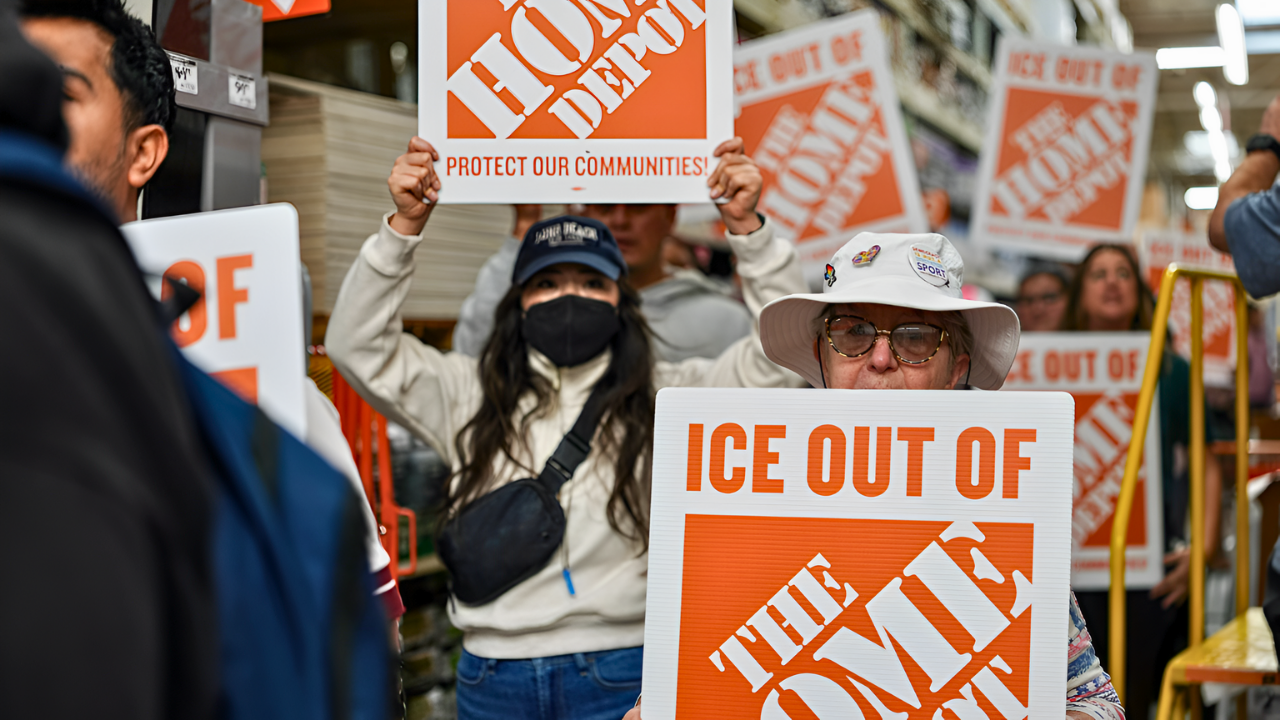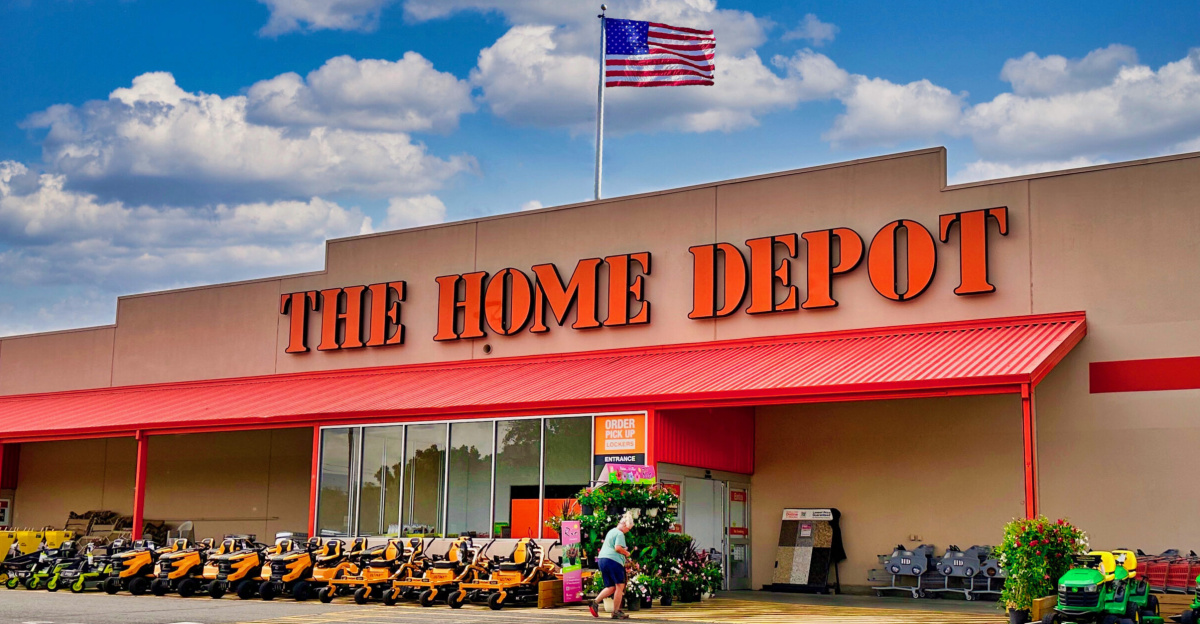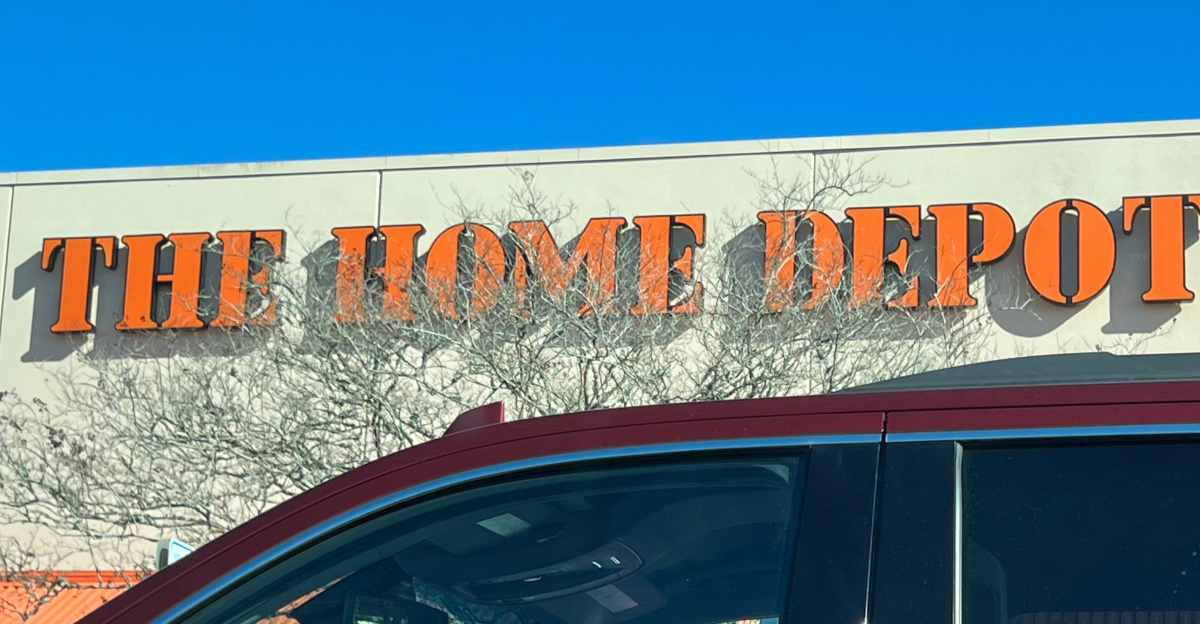
Nearly 100 people converged on a Home Depot in Monrovia, California, one Saturday morning, each clutching a 17-cent ice scraper. They bought the scrapers, exited, and then returned them—over and over—creating long lines and grinding store operations to a halt. This unusual protest, known as a “buy-in,” was not about theft but about sending a pointed message: remove ICE (Immigration and Customs Enforcement) from Home Depot’s premises. The demonstration was a response to mounting grief and frustration in a community shaken by aggressive immigration enforcement.
A Coordinated Protest Across Cities

The buy-in protest was not isolated to Monrovia. Simultaneous actions took place in Charlotte, North Carolina, with demonstrators donning homemade orange aprons that read “ICE out of Home Depot,” echoing the uniforms of store employees. Protesters grabbed the store’s signature orange buckets, using them as drums to create a rhythmic march through the aisles. For nearly an hour, the demonstration disrupted business so thoroughly that management closed one entrance. Employees looked on, uncertain how to respond to a protest that technically followed store policies but upended daily operations.
The ice scraper, chosen for its symbolic value and low cost, became the centerpiece of the protest. “We wanted to scrape ICE out of their stores,” explained Erika Andiola, political director of the National Day Laborer Organizing Network. By repeatedly buying and returning the scrapers, protesters tied up cashiers. They generated approximately $1,700 in churned sales at the Monrovia location alone—a financial disruption that left a lasting impact without breaking any laws.
A Tragedy Sparks Outrage
The roots of the protest can be traced back to a tragedy that occurred on August 14. Carlos Roberto Montoya Valdez, a 52-year-old Guatemalan day laborer, died after running onto the 210 Freeway while fleeing immigration agents at the Monrovia Home Depot. Montoya, who had lived in the U.S. for three years supporting his family, was killed by an SUV during the pursuit. While the Department of Homeland Security stated that agents were not actively chasing him, witnesses reported that fear drove him to flee. His death sent shockwaves through the local community, destabilizing families and fueling anger over the presence of ICE at places where day laborers gather for work.
In the aftermath, organizers set up two altars in the Home Depot parking lot, each holding 24 white crosses to honor the 48 people who either died during immigration raids or who are in ICE detention. The memorials served as a stark reminder of the human cost of immigration enforcement. Clergy members attended, and local leaders spoke about the essential role immigrant laborers play in rebuilding communities after disasters, even as they remain targets for deportation.
Home Depot’s Response and the Corporate Dilemma

Home Depot, caught in the crosshairs of the protest, issued a carefully worded statement through corporate communications manager George Lane. The company asserted that it does not coordinate with ICE or Border Patrol and is often unaware of raids until after they occur. Lane emphasized that Home Depot is required to comply with all federal and local regulations. For many protesters, however, this response felt like a legal shield rather than a moral stance, fueling perceptions that the company’s silence amounted to complicity.
The focus on Home Depot was not accidental. Reports indicate that Stephen Miller, a key architect of the Trump administration’s immigration policy, specifically suggested targeting Home Depot for enforcement actions. Since then, at least a dozen Southern California Home Depot stores have experienced ICE raids, some repeatedly, turning parking lots into sites of fear for day laborers seeking honest work.
Social Media Amplifies the Issue

The controversy gained national attention when social media influencer Bobbi Althoff, with millions of followers, revealed that ICE had arrested her family friend, Felix Morales Gomez, in a Home Depot parking lot. Gomez, a 62-year-old with no criminal record, was detained while waiting for construction work. Althoff’s public advocacy brought a human face to the issue, mobilizing a broader audience and highlighting the risks faced by immigrant workers in these informal job hubs.
For decades, Home Depot parking lots in Southern California have served as gathering places for day laborers, many of whom are immigrants in the construction and landscaping industries. Contractors rely on these workers, and Home Depot’s business model depends heavily on contractor sales. This ecosystem, while supporting livelihoods, has also made these locations attractive targets for ICE operations.
A Strategic Shift: Buy-In Over Boycott

Organizers deliberately chose a buy-in rather than a boycott. As Erika Andiola explained, a boycott would harm day laborers who depend on customer traffic for job opportunities. The buy-in allowed protesters to disrupt operations and draw attention to their cause without jeopardizing the workers’ ability to find employment.
Looking Ahead: The Stakes for Communities and Corporations
The 17-cent ice scraper protest marks a turning point in the intersection of immigration enforcement and corporate responsibility. By targeting a major retailer with a symbolic, rule-abiding action, organizers compelled a public reckoning with the reality that everyday spaces—such as parking lots—have become sites of fear for many. As debates over immigration policy and enforcement continue, the stakes remain high for both vulnerable communities and the corporations that serve them.